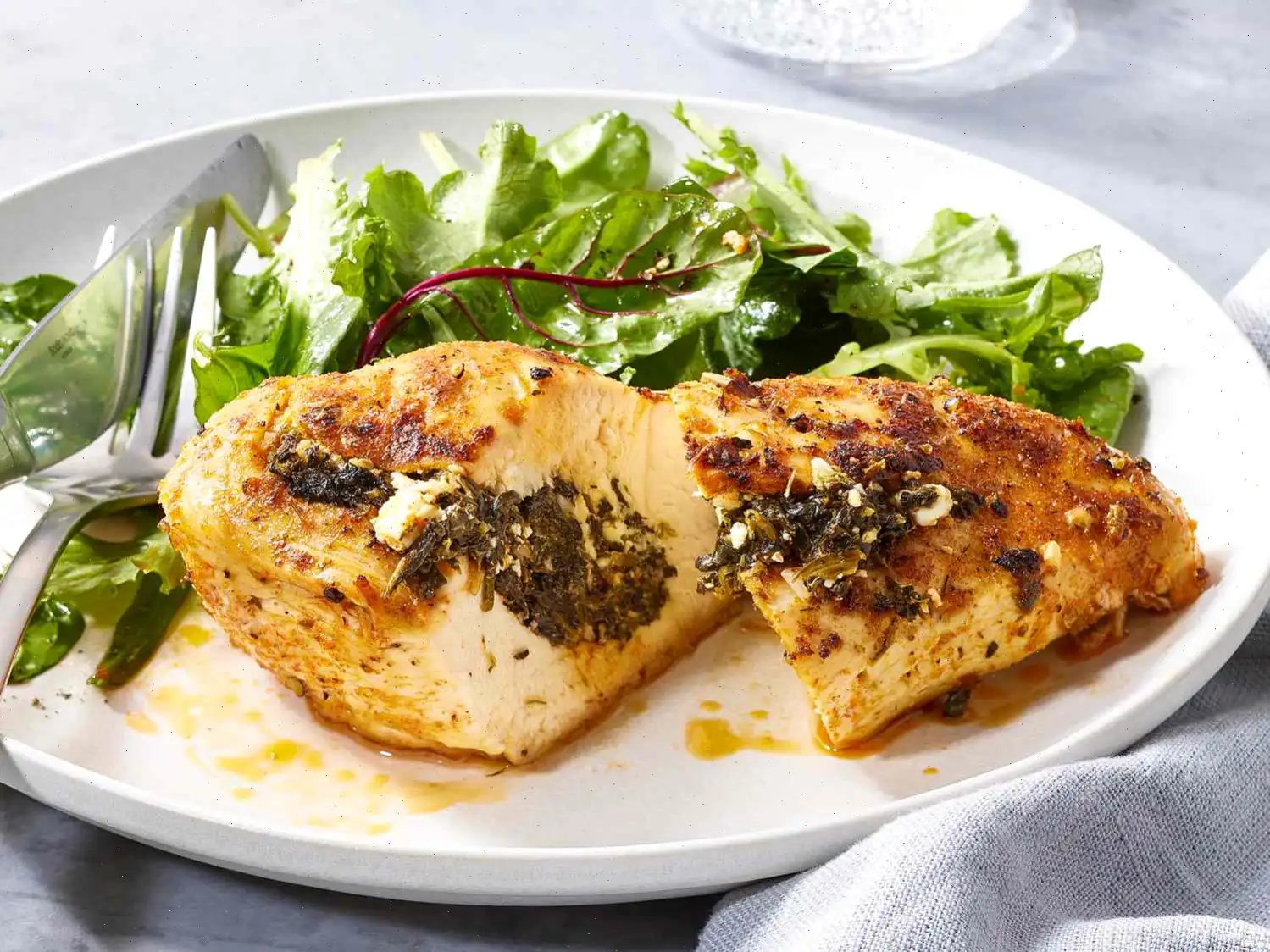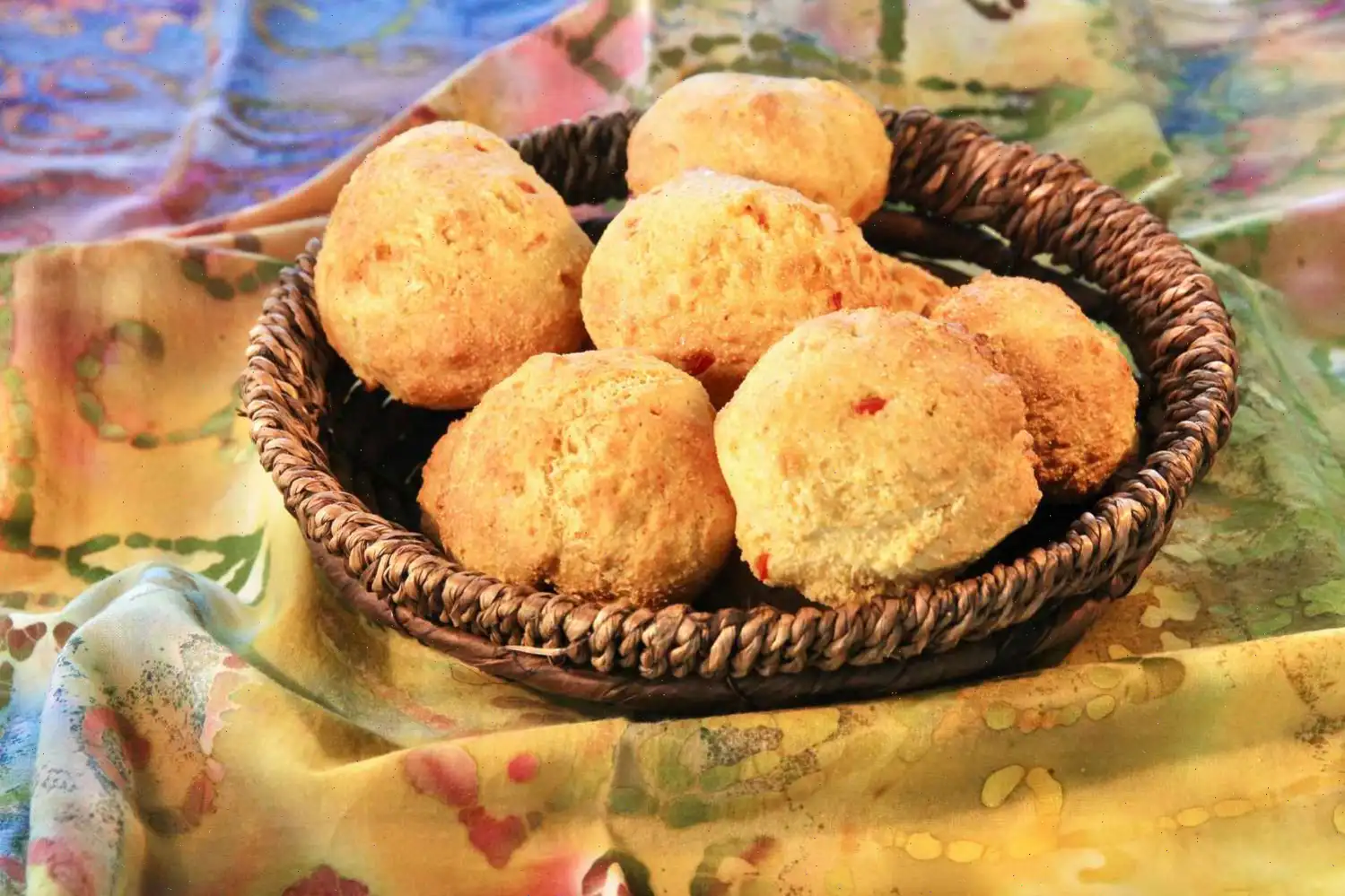
Wasabi Shrimp Sushi Cups Recipe
Wasabi Aioli Sushi Cups
This recipe yields 8 servings and is a perfect balance of spicy, savory, and refreshing flavors. The wasabi aioli adds a kick to the sushi cups, making them a delightful appetizer or snack.
Ingredients
- 1 tablespoon wasabi paste
- 1 teaspoon soy sauce
- 2 tablespoons mayonnaise
- 1 cup sushi rice, prepared according to package directions
- 1/2 cup matchstick-cut carrots
- 1/2 cup matchstick-cut cucumbers
- 1/2 cup frozen shelled edamame, thawed
- 4 cooked shrimp, sliced in half lengthwise
- 2 tablespoons ginger to taste (optional)
- 1/2 teaspoon black sesame seeds (optional)
Directions
- Make the wasabi aioli: Combine wasabi paste, soy sauce, and mayonnaise in a small zippered food storage bag. Gently squeeze the bag to mix the ingredients. Taste the mixture and add more wasabi paste if you'd like extra spice. Seal the bag and refrigerate for later use.
- Prepare the sushi rice cups: Place about 1/8 cup of the cooked and cooled sushi rice into each of 8 silicone muffin cups. Using damp fingertips, press the rice firmly into the cups. Shape some of the rice up along the sides of the cup. Refrigerate the cups for at least 20 minutes to allow them to set.
- Assemble the sushi cups: Once the rice has chilled, fill each rice cup with matchstick-cut carrots, cucumbers, and edamame. Top each cup with one shrimp half.
- Finish with wasabi aioli: Snip a small corner off the wasabi aioli bag and squeeze the contents over the filled sushi cups.
- Garnish: Sprinkle the sushi cups with black sesame seeds and serve immediately with pickled ginger on the side for an extra burst of flavor.
Nutrition Facts (per serving)
| Calories | 92 |
| Total Fat | 4g (5% DV) |
| Saturated Fat | 1g (3% DV) |
| Cholesterol | 29mg (10% DV) |
| Sodium | 310mg (13% DV) |
| Total Carbohydrate | 9g (3% DV) |
| Dietary Fiber | 1g (4% DV) |
| Total Sugars | 2g |
| Protein | 5g (10% DV) |
| Vitamin C | 1mg (1% DV) |
| Calcium | 24mg (2% DV) |
| Iron | 0mg (2% DV) |
| Potassium | 110mg (2% DV) |
* Percent Daily Values are based on a 2,000-calorie diet. Your daily values may be higher or lower depending on your calorie needs.
The History and Origins of Wasabi Shrimp Sushi Cups
Wasabi Shrimp Sushi Cups are a modern take on traditional Japanese sushi, combining classic ingredients with a playful, bite-sized presentation. Sushi itself dates back to the Edo period in Japan (16031868), when it was originally a method of preserving fish with fermented rice. Over the centuries, sushi evolved from a preservation technique into the delicate, artful cuisine known worldwide today. The idea of sushi cups likely emerged in the 21st century as a fusion-inspired appetizer, offering the flavors of sushi in an easy-to-serve format suitable for parties and gatherings. Incorporating wasabi in the aioli adds a distinctive, modern twist to the original recipes.
Regional Characteristics
While traditional sushi is rooted in Japanese cuisine, the wasabi shrimp variant reflects a blend of East Asian and Western influences. In Japan, sushi emphasizes balance and minimalism, often highlighting the natural flavors of seafood. In contrast, sushi cups are more common in North America, where visual presentation, convenience, and bold flavor combinations are prioritized. The inclusion of mayonnaise-based wasabi aioli, along with vegetables like carrots, cucumbers, and edamame, aligns with Western adaptations of sushi while maintaining Japanese flavor profiles.
Differences from Similar Dishes
Unlike classic nigiri or maki rolls, wasabi shrimp sushi cups present the ingredients in a compact, cup-shaped vessel made of seasoned sushi rice. This structure allows for a layered experience of texture and flavor with each bite, differentiating it from flat rolls or hand rolls. Additionally, the use of wasabi aioli as a topping, rather than raw wasabi paste, provides a creamy consistency and a more subtle heat that complements the shrimp, vegetables, and rice. This dish also emphasizes individual servings, making it ideal for appetizers or buffet-style presentations.
Typical Settings for Serving
Wasabi Shrimp Sushi Cups are most often served at casual gatherings, cocktail parties, or sushi buffets where finger foods are preferred. Their small, neat size makes them convenient for self-service events, while still offering a visually appealing dish that can impress guests. Some upscale restaurants may offer this variation as a starter, pairing it with complementary items like miso soup, pickled ginger, or a light sake selection. The cups are usually garnished with black sesame seeds or thin slices of pickled ginger to enhance both flavor and aesthetics.
Interesting Facts
- Each sushi cup contains approximately 92 calories, making it a lighter appetizer option compared to traditional sushi rolls with heavier sauces.
- The use of edamame adds a pop of color and a plant-based protein source, which is increasingly popular in modern fusion cuisine.
- The concept of shaping rice into cups draws inspiration from both Japanese bento culture and Western hors d'oeuvre presentation techniques.
- Wasabi paste, originally derived from the root of the Wasabia japonica plant, is rare and expensive in Japan. Many modern recipes, including sushi cups, use a milder horseradish-based substitute for convenience.
- This dish exemplifies the global evolution of sushi, blending traditional Japanese elements with creative, contemporary styling for modern palates.
FAQ about Wasabi Shrimp Sushi Cups Recipe
Comments
Jeffrey Green
10/15/2023 04:12:13 AM
As a sushi enthusiast, I am quite familiar with the intricacies of preparing sushi rice. When done correctly, it requires approximately 50 minutes of preparation time and then about 20 minutes of cooking time, not to mention the additional cooling time. This is something to keep in mind when planning to make these delightful sushi cups! While matchstick cuts work well for carrots and cucumbers, they can also be grated for individuals with dental issues or young children. I recommend thinly slicing the shrimp instead of cutting them in half. Personally, I find that grated veggies fit better in the cup. The wasabi aioli is fantastic and can be lightly spread inside the cup before adding any other ingredients. This recipe is definitely a keeper and perfect for family gatherings. I decided to include minced fresh ginger in the aioli as they didn't specify what to do with the ginger.







